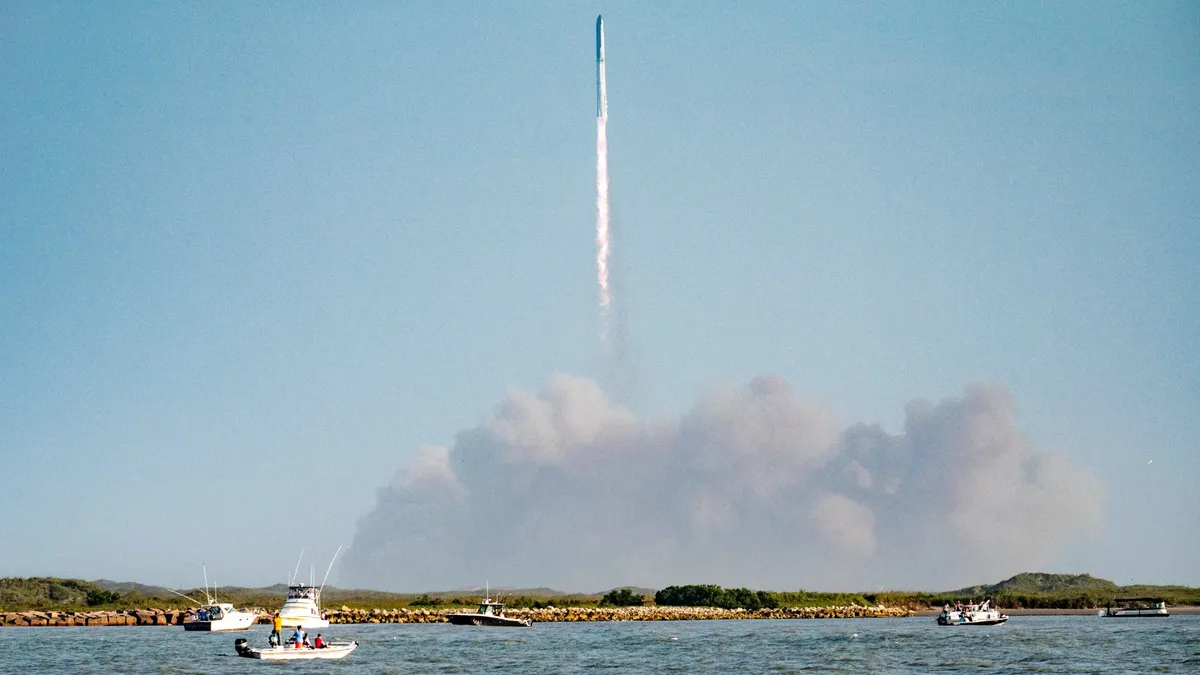
On May 27, SpaceX successfully launched its Starship megarocket for the ninth time, marking a significant milestone in the quest for rocket reusability. This test flight showcased the first substantial reuse of Starship hardware, demonstrating how SpaceX continues to push the boundaries of space exploration. The two stages of the rocket separated as intended during Flight 9, with the upper stage even reaching space, indicating progress from previous flights.
Despite this progress, SpaceX faced challenges as both stages of the rocket were lost before achieving their full flight objectives. Starship successfully reached its scheduled engine cutoff, a significant improvement over the prior flights. After the mission, SpaceX CEO Elon Musk took to social media to highlight the positives: “Lot of good data to review,” he stated. He also mentioned that the next three test launches of Starship could occur every three to four weeks, indicating a rapid development pace.
SpaceX is developing Starship, the largest and most powerful rocket ever constructed, aimed at facilitating human settlement on the Moon and Mars. This vehicle consists of two stages: the Super Heavy booster and the Starship upper stage, which stands at 171 feet (52 meters) tall. Both stages are designed for complete and rapid reusability and are powered by SpaceX’s new Raptor engines—33 engines for Super Heavy and six for the Starship.
Prior to this launch, a fully stacked Starship had lifted off eight times from SpaceX's Starbase site in South Texas. Notably, two of these launches occurred earlier this year, on January 16 and March 6, both of which had mixed outcomes. As SpaceX's Dan Huot stated during the Flight 9 webcast, “We are trying to do something that is impossibly hard,” emphasizing that the journey towards successful space travel is fraught with challenges.
Flight 9 lifted off from Starbase at 7:37 p.m. EDT (2337 GMT; 6:37 p.m. local Texas time), propelling the 40-story-tall rocket into the sky. This mission was historic, as it marked the first reuse of a Super Heavy booster that had previously flown in January. SpaceX made only minor adjustments to the booster, swapping out four of its Raptors, which meant that 29 engines had already proven their reliability in prior flights.
The Super Heavy booster executed a controlled return flip and entered the atmosphere at a steeper angle than before. This approach aimed to increase atmospheric drag, reducing the need for propellant during the landing burn. However, this mission's complexity made the catch by the launch tower's chopsticks more challenging. Ultimately, SpaceX opted for a hard splashdown in the Gulf of Mexico; however, the booster disintegrated about 6 minutes and 20 seconds into the flight, failing to complete its landing burn.
In contrast, the Starship upper stage improved its performance by reaching space on a suborbital trajectory over the Atlantic Ocean. Unfortunately, it could not deploy eight dummy Starlink satellites as planned due to an issue with the payload door. Furthermore, the vehicle began to tumble about 30 minutes after launch, attributed to a fuel tank leak, leading to the loss of attitude control. Consequently, SpaceX decided against relighting one of Ship's Raptor engines in space, abandoning hopes for a soft splashdown.
Despite not achieving all desired objectives, the data collected from Flight 9 will be invaluable. SpaceX removed some of Ship's heat shield tiles for stress testing and experimented with various tile materials, including one featuring an active cooling system. SpaceX remains committed to learning from each flight, as expressed by manufacturing engineering manager Jessie Anderson: “We’re going to learn, iterate, and iterate over and over again until we figure it out.” The company’s resilience and dedication to innovation continue to pave the way for future successes in space exploration.